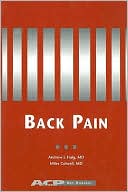Category Books
- Fiction Books & Literature
- Graphic Novels
- Horror
- Mystery & Crime
- Poetry
- Romance Books
- Science Fiction & Fantasy
- Thrillers
- Westerns
- Ages 0-2
- Ages 3-5
- Ages 6-8
- Ages 9-12
- Teens
- Children's Books
- African Americans
- Antiques & Collectibles
- Art, Architecture & Photography
- Bibles & Bible Studies
- Biography
- Business Books
- Christianity
- Computer Books & Technology Books
- Cookbooks, Food & Wine
- Crafts & Hobbies Books
- Education & Teaching
- Engineering
- Entertainment
- Foreign Languages
- Game Books
- Gay & Lesbian
- Health Books, Diet & Fitness Books
- History
- Home & Garden
- Humor Books
- Judaism & Judaica
- Law
- Medical Books
- New Age & Spirituality
- Nonfiction
- Parenting & Family
- Pets
- Philosophy
- Political Books & Current Events Books
- Psychology & Psychotherapy
- Reference
- Religion Books
- Science & Nature
- Self Improvement
- Sex & Relationships
- Social Sciences
- Sports & Adventure
- Study Guides & Test Prep
- Travel
- True Crime
- Weddings
- Women's Studies
Back Pain: A Guide for the Primary Care Physician »

Authors: Andrew J., Ed. Haig Ed., Miles Colwell
ISBN-13: 9781930513594, ISBN-10: 1930513593
Format: Paperback
Publisher: American College of Physicians
Date Published: April 2005
Edition: (Non-applicable)
Author Biography: Andrew J., Ed. Haig Ed.
Book Synopsis
Back pain is a complex tangle of social, psychological, physical, and medical factors that frustrates disease-orientated physicians and excites physical medicine and rehabilitation types. For this problem, "diagnosis-treat-cure" is supplanted by rehab strategies to minimize impairment, disability, and handicap. Physical medicine approaches to cure and rehabilitation approaches to quality of life are centerpieces of back pain management. The newest volume in the ACP Key Diseases series, Back Pain presents 40 chapters of vital information divided into five sections: Back Pain Basics; Acute, Subacute, and Chronic Back Pain; and Special Issues, including pregnant and elderly patients, and athletes and younger patients. Clinicians will find this an invaluable resource for successful back pain therapy.
Doody Review Services
Reviewer:Paul H. Lento, MD(Rehabilitation Institute of Chicago)
Description:This comprehensive guide reviews the various causes and treatment of low back pain, outlining various algorithms for acute, subacute, and chronic low back pain.
Purpose:The authors and their contributors tackle difficult back pain populations such as the injured worker and the pregnant patient, adolescent, and athlete with low back pain. They provide the primary care physician with a fairly complete discussion on the various causes of low back pain, including the work-up of these conditions when necessary, and the appropriate treatment for the etiologies of low back pain. Although most low back pain improves with time, the authors describe potential yellow flags that may help predict which patients may become chronic back pain sufferers and offer recommendations on how to prevent this costly circumstance from developing. Additionally, the book covers less commonly addressed topics such as back pain in patients with disabilities and when to stop or limit physical therapy.
Audience:The introduction states that the book is written for primary care physicians. However, it would also be an ideal reference for musculoskeletal specialists, since it discusses imaging, testing, and the nonoperative treatment of patients with low back pain.
Features:The book points out that low back pain, particularly when chronic, may not only affect patients' physical health, but also their social, personal, and psychological well-being. Often, clinicians fail to realize how back pain may affect all aspects of a person's life. Through an insightful discussion, primary care physicians are educated in how the rehabilitation physician and the multidisciplinary chronic pain team are well-equipped to manage this type patient. One of the best features of the book is that at the conclusion of each chapter, the authors list recommendations, key points, and important references, which are convenient for clinicians who want to use this as a quick reference. Clinicians may also use these key references to read more extensively on a topic.
Assessment:This book summarizes many of the complex issues surrounding patients with low back pain and is highly recommended reading not only for primary care clinicians, but also specialists treating this challenging patient population.
Table of Contents
Subjects
 Diseases & Disorders
Diseases & Disorders  Back Pain
Back PainHealth Books, Diet & Fitness Books
 Health
Health  Body Care & Health
Body Care & HealthMedical Books
 Medicine
Medicine  Clinical Medicine
Clinical MedicineNonfiction
 Medicine
Medicine  Medicine
Medicine
